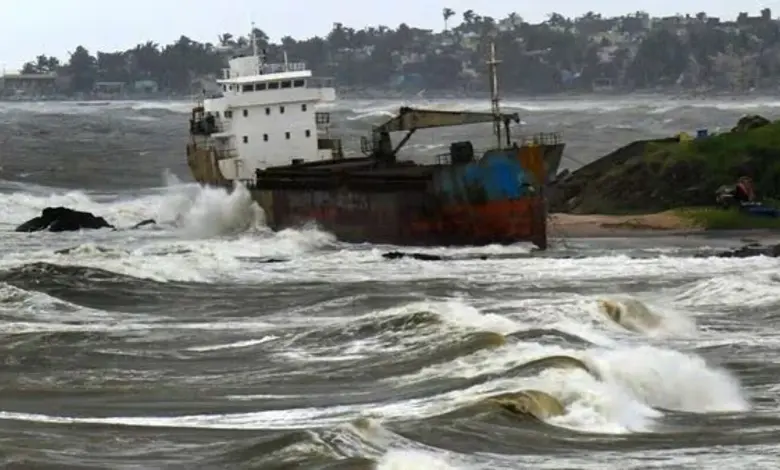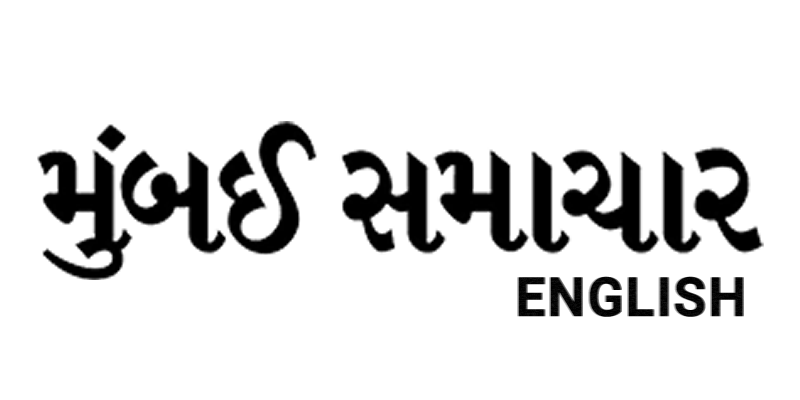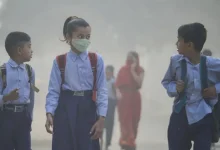
Visakhapatnam/Kakinada/Bhubaneswar – A powerful cyclone named Montha barreled into India’s eastern seaboard on Tuesday evening, unleashing gusts exceeding 100 km/h and relentless downpours that devastated coastal regions in Andhra Pradesh and Odisha. The storm’s landfall, which occurred around 7:30 p.m. between Machilipatnam and Kalingapatnam close to Kakinada, persisted for nearly four hours as a severe cyclonic system, triggering widespread destruction including uprooted trees blocking major roads, toppled electricity poles, and towering 10-foot waves crashing ashore.
In Andhra Pradesh, the cyclone’s fury proved fatal when a massive tree collapsed onto a residence in Makanapalem village, Mamidikuduru mandal, killing a local woman. Floodwaters surged through low-lying areas, particularly along the Uppada coast in Kakinada district, where authorities sealed the beach road after waves overwhelmed protective barriers, inundating homes and eroding infrastructure. Power outages plunged entire communities into darkness, while debris-strewn highways hampered immediate response efforts.
Odisha, though spared direct casualties, endured the storm’s peripheral onslaught with fierce winds up to 100 km/h lashing Ganjam and Gajapati districts, accompanied by heavy rains that triggered landslides and isolated remote towns like R. Udayagiri, Parlakhemundi, Huma, and Kashipur. Roads remained impassable, and fallen foliage compounded the chaos.
In a coordinated bid to avert further tragedy, officials in Andhra Pradesh evacuated more than 10,000 individuals—predominantly from fishing communities in 65 villages across 12 coastal mandals—prior to the storm’s arrival. Kakinada District Collector S. Shanmohan reported that two National Disaster Response Force (NDRF) teams, one State Disaster Response Force (SDRF) unit, 200 trained swimmers, and 140 boats were mobilized on the ground. “Helipads stand prepared for emergency airlifts from inundated zones if needed,” he noted. An additional 12,000 residents sought refuge in 76 cyclone shelters, and nearly 1,000 livestock were relocated to elevated sites. Disruptions extended to aviation, with eight flights grounded at Rajahmundry airport, severing links to cities including Tirupati, Chennai, Bengaluru, Hyderabad, and Mumbai.
Odisha’s administration activated over 2,000 cyclone shelters and stationed 158 emergency response units comprising five NDRF teams, 30 Odisha Disaster Rapid Action Force (ODRAF) squads, and 123 fire service personnel to spearhead relief operations. Chief Minister Mohan Charan Majhi, overseeing the efforts, emphasized a “zero casualty” protocol, confirming that 11,000 at-risk individuals had been shifted to safety. “We stand ready to evacuate another 30,000 should the situation deteriorate further,” he stated. Deputy Chief Minister Pravati Parida highlighted severe agricultural losses and pledged compensation following assessments expected within a week.
ALSO READ : Cyclone Montha: Andhra Pradesh Faces Midnight Onslaught as Neighbors Gear Up for Deluge
The India Meteorological Department (IMD) anticipates Montha’s remnants to persist into Wednesday, delivering intense to exceptionally heavy rainfall across southern Odisha before the system dissipates over Chhattisgarh with winds up to 80 km/h. IMD Director General Mrutyunjay Mohapatra forecasted a gradual decline, with showers lingering in Odisha’s interiors through Thursday and easing by Friday. Regional IMD head Manorama Chhotray echoed these projections, urging continued vigilance amid the ongoing deluge.
As rescue crews navigate rain-soaked terrains to restore normalcy, the cyclone underscores the region’s vulnerability to seasonal tempests, with authorities bracing for potential aftereffects in the days ahead.




